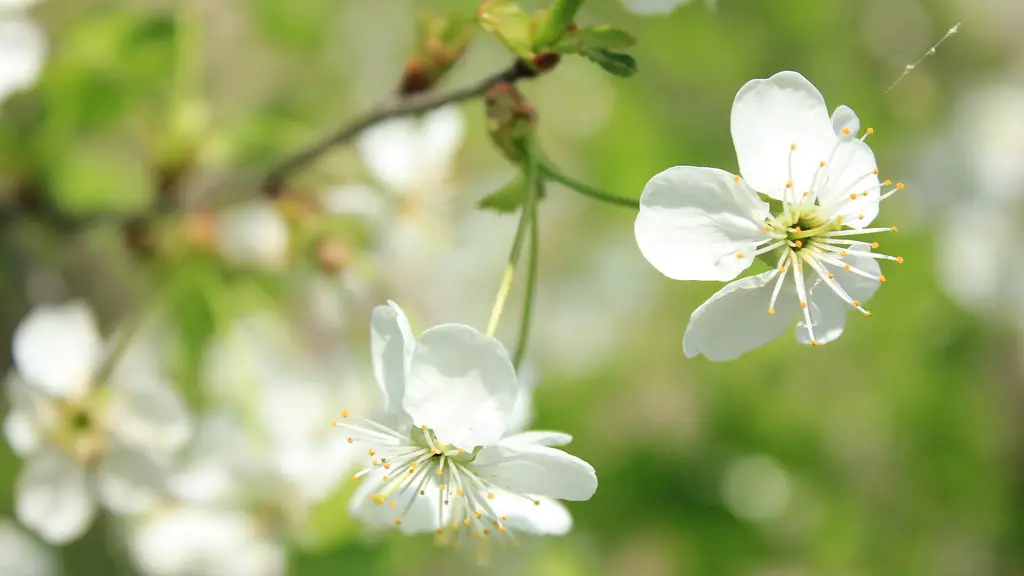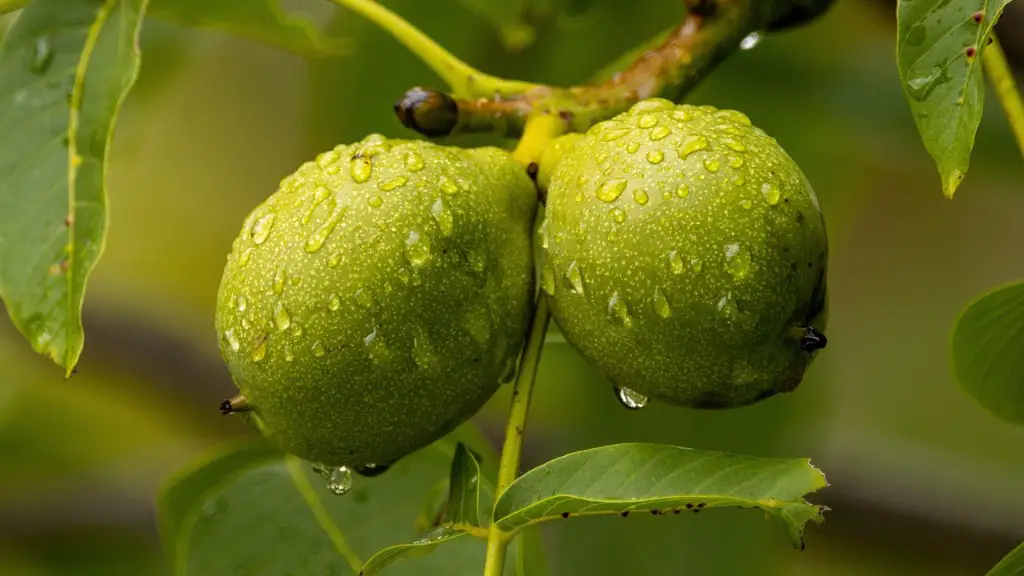Avocado trees are well known for their delicious fruit, and they are becoming increasingly popular trees in Florida to grow in a garden or backyard. But how one should care for this hardy and fast-growing tree is an important question for any potential avocado grower to consider. Pruning an avocado tree is an important task in ensuring healthy growth, development and functionality. This article will explain when to prune an avocado tree in the state of Florida, the benefits of pruning, and the necessary steps to take for successful pruning.
Avocado trees grow rapidly, often reaching their full height in two to three years after planting. Pruning is important for controlling the structure of the tree, allowing you to direct where avocado fruit will grow and the shape of the tree. It is also useful for generating bushy and strong foliage, creating more space for air circulation throughout the tree and eliminating overcrowded branches, and protecting from diseases such as root rot. Pruning is ultimately necessary for promoting healthy growth and blooming of the avocado tree.
Avocado trees in the state of Florida should be pruned in either late winter or early spring. It is best to check with a local nursery for the optimal time for pruning in your specific growing zone. This time frame allows for new growth and blooms to form before the hottest temperatures of the summer, but the pruning tasks should still be completed before the new leaf development begins. The best way to follow the pruning timeline is to plan ahead and give the tree a trim just before the winter season ends.
When pruning an avocado tree in Florida, use sharp, clean pruning tools to ensure a clean cut. Begin by removing any dead, diseased, or broken branches first. Then prune away any branches that are in the way or crowding the center of the canopy. It is important to open up the canopy, as this will help to improve the airflow and sunlight penetration and reduce the risk of diseases. To get a nice symmetrical shape, cutting branches at varying angles is recommended instead of cutting them all straight across.
When all of the pruning tasks for the avocado tree have been completed, it is important to protect the exposed areas on the tree. Pruning can leave trees vulnerable to sunburn and other weather-related issues, so it is wise to use an appropriate tree protectant. Make sure it contains fungicides to prevent fungal and mold growth. The protectant should also reduce the amount of water and moisture in the tree, helping it become drought tolerant.
The proper time for pruning an avocado tree in Florida is an important consideration. If done correctly, pruning will help promote healthy and robust growth in your tree as well as providing other benefits. Following the guidelines outlined above – including timing, cleaning tools, and protecting the tree – will help to ensure that pruning tasks are completed successfully and the avocado tree flourishes.
Advantages of Pruning an Avocado Tree
Pruning an avocado tree can be beneficial in a number of ways. In general, pruning aids in both form and function. This means that, aside from helping to create an aesthetically pleasing shape and structure, pruning also serves practical purposes. Pruning encourages the growth of new flowers and fruits and helps to increase the yield of the tree each season, as well as promoting air circulation and reducing the potential for disease.
When pruning, it is important to remember to cut back all the branches that are growing outward and inward so that the canopy is open. This will help the tree absorb more sunlight, which is essential for the health of the tree. Pruning also encourages new growth of fruits and flowers, which increases the yield and quality of the produce. Ultimately, this means more avocado for everyone!
Pruning is also beneficial for controlling the overall size of the tree. This is especially important for an avocado tree, as they can grow to be quite large. By controlling the size, it is possible to keep the tree at a manageable and safe level. Pruning also improves light penetration, as it removes any dead or competing vegetation that may block the sun. This again encourages healthy new growth, leading to bigger and better avocados.
Finally, pruning helps the tree to be more disease resistant. This is because it reduces the potential for overcrowded branches that can trap humidity and create an ideal environment for mold and fungus growth. Removing these branches helps to reduce the potential for infections from developing, as well as improving the overall health of the tree.
How to Prune for Better Harvest
Pruning an avocado tree for better harvests is a matter of understanding which branches to prune away and which ones to keep. If a tree has an abundance of branches and foliage, it is important to thin out the tree by removing the oldest and longest branches. These are typically located towards the lower part of the tree, and they should be cut back to a point that is slightly higher than the main trunk. This will create space for the remaining branches and create a more open canopy.
It is also important to remove any damaged or weak branches that could be susceptible to diseases or pests. Branches that are growing inward or crossing others should also be pruned away. This will create better airflow and reduce the chance of disease. If the tree is fruiting, it is also important to thin out the fruit by removing some of the immature fruits. This will help the tree to focus its energy on producing larger, better quality fruit.
Older trees should also be pruned to create a strong and balanced structure. This means cutting back any branches that are growing too long or too low, as well as those that are growing in an unnatural direction. Any branches that are growing too densely or in a shape that could interfere with the overall shape of the tree should also be removed.
Overall, pruning an avocado tree is essential to ensure healthy and regular harvests each season. Regular and proper pruning helps to reduce overcrowding, create a well-manicured aesthetic, and boost fruit production. With the proper pruning techniques, a Florida avocado tree can be an abundant and profitable addition to any garden.
Pest Control in the Avocado Tree
Avocado trees can be susceptible to a range of pests and diseases, so it is important to be aware of potential infestations. Common avocado pests include whiteflies, mites, and scale. Whiteflies can cause yellowing of the leaves and stunted growth, so it is important to monitor for them and take measures for pest control if necessary. Mites can cause small red spots to form on the leaves, and scale can leave a thick white residue. When pruning the avocado tree, it is important to check for any signs of pest infestations and remove any affected branches.
In addition to pest control, it is also important to be aware of any signs of disease. The most common diseases affecting avocado trees are root rot, brown rot, and powdery mildew. Brown rot will cause brown and shriveled fruits to form, while powdery mildew can form a white, dusty residue on the leaves. Root rot, however, is the most serious and can be caused by poor soil drainage or insufficient irrigation. To reduce the chances of root rot, ensure that the soil is draining properly and that the tree receives enough water. In the case of root rot, it is important to consult with a local nursery for advice on pest and disease control.
Pest and disease control is an important part of avocado tree maintenance, and regular pruning helps to reduce the chances of an infestation or infection. Pruning away any affected branches helps to stop an infestation from spreading, as well as improving the overall health and aesthetics of the tree. Therefore, it is essential to monitor for any signs of pests and diseases, and to take steps for pest control if necessary.
Saving Avocado Seeds
Saving avocado seeds from the fruit that is grown on your avocado tree can be a great way to get a head start on planting a new tree. To save the seeds, simply wash the seed, cut it lengthwise, and remove the inner seed. Allow the seed to dry completely before storing it in a cool, dry place. The seed should be viable for up to six months if stored properly.
Once you are ready to plant, it is important to prepare the soil in advance. Avocado trees prefer a combination of nitrogen, potassium and phosphorous. The soil should also be slightly acidic, around 6.0 on the pH scale. Avocado trees should be planted at least eight feet away from any other trees or structures, as they can become quite large when fully grown. The seed should also be planted at least two inches deep to ensure that it’s not affected by surface temperatures.
Regular monitoring of the tree is important to ensure that it’s growing well. If the tree appears to be struggling, it is worth consulting with a local nursery for advice. Fertilizing the soil and providing adequate water can help the tree to grow strong and healthy. Once the tree is established, water it deeply once per week in the spring and summer, and check for any signs of pests or diseases.
Saving avocado seeds and planting a new tree can be a rewarding and fun experience. While it will take several years for the tree to reach maturity, the effort will be worth it when fresh avocados are harvested from your own backyard tree.
Caring for Established Avocado Trees
The hard work of caring for an established avocado tree is known to be quite rewarding once the tree is mature and yields its delicious fruit. As with any tree, it is important to monitor the tree for any signs of disease or pests, as well as establishing a regular fertilization program. If extra nutrients are required, fish emulsion and compost are both suitable fertilizers for the avocado tree.
It is important to water the tree deeply and consistently, as avocado trees need plenty of moisture to produce fruit. During hot summer months, it can be helpful to mulch the soil around the tree. This will help to keep the soil moist and promote healthy growth in the tree. Water deeply once a week in the summer, and when the temperatures fall in the winter, water every two to three weeks.
Regular pruning is essential to keep the tree healthy. The tree should be pruned at least once a year to maintain its structure and shape. To keep the canopy open and promote better air flow, dead or overcrowded branches should be removed. Removing any diseased or broken branches will also help to reduce the chance of infection or pests.
Overall, taking care of established avocado trees requires dedication and commitment. Regular watering, fertilization, pruning, and pest control will help the tree to thrive and yield a bounty of delicious fruits. With these practices and a bit of patience, an avocado tree can be an incredibly rewarding addition to any garden.




